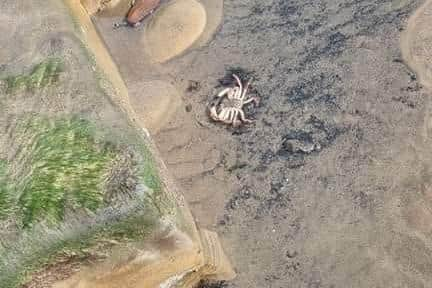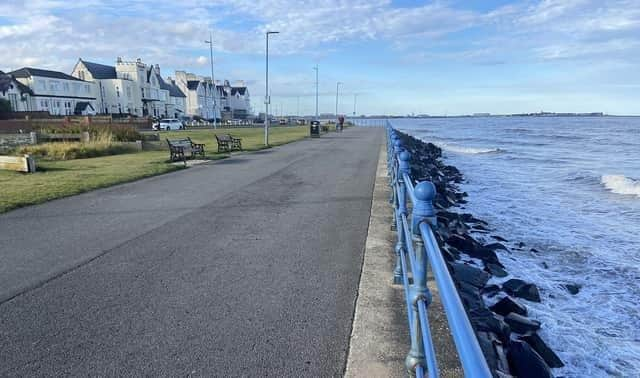Crab deaths ‘more consistent with poisoning by industrial toxins’, study finds
and live on Freeview channel 276
Residents reported thousands of dead crabs washed up on Teesside and East Durham beaches in October 2021 – with “well over a hundred” spotted at Seaton Carew beach alone.
Advertisement
Hide AdAdvertisement
Hide AdBut a new study carried out by academics at Durham, Newcastle, Hull and York universities has claimed the chemical pyridine, which could be released by dredging or storms, is the more likely cause.


The research, which was commissioned by the North East Fishing Collective (NEFC), says that pyradine was found in both near-shore and offshore sediments and can cause twitching that was seen in affected Teesside crabs.
Although the study says “a source of pyridine remained to be identified”, it adds that the chemical is “a common industrial chemical and at least one Teesside industrial plant is known to have handled large amounts of it before 2019.”
The report, which is yet to be peer-reviewed, said: “The results support the suggestion that pyridine and dredging could have played a major part in the observed mass mortality events.”
Advertisement
Hide AdAdvertisement
Hide AdDefra has described the deaths as “a complex scientific issue”, with algal bloom the most likely close.


But according to the latest research, algal bloom around Teesside last October “was not unusually large” and while harmful algal blooms “usually kill a broad range of organisms”, including starfish, fish and shellfish, crabs were “disproportionately affected”.
“The report shows exactly what we have witnessed along our coastline. The pattern of the dredge dispersal, symptoms to crabs and mass mortalities can all be linked together now. It just all makes sense,” said NEFC member and Hartlepool fishing respresentative Stan Rennie.
Joe Redfern, who is also a member of the NEFC, as well as a marine biologist, added: “The conclusions from the universities are clear.
Advertisement
Hide AdAdvertisement
Hide Ad"They demonstrate that pyridine is present in our marine environments and that dredging had the potential to disperse the toxic chemical across the entire impacted area.
"Furthermore, the toxicity analysis shows just how harmful pyridine is to crabs. It would be irresponsible to discount these findings and allow destructive dredging and sediment dumping to continue out of the Tees.”
A Defra spokesperson said: “A comprehensive investigation last year included extensive testing for chemicals and other pollutants such as pyridine. It concluded a naturally occurring algal bloom was the most likely cause.
"We recognise the concerns in regards to dredging, but we found no evidence to suggest this was a likely cause. There have been no materials licensed for disposal at sea in the area which would fail to meet international standards.
Advertisement
Hide AdAdvertisement
Hide Ad“This is a complex scientific issue, which is why we took a thorough, evidence based approach. We welcome research carried out by universities and will continue to work with them, including studying this report carefully. We are aware there have been some localised reductions in catch rates and we are continuing to monitor shellfish populations in the area.”
